The Defence Committee has urged the Ministry of Defence to ensure the Royal Navy’s future Type 83 destroyers are hardened for Arctic operations, as part of a wider strategy to respond to grey zone threats and protect critical undersea infrastructure.
In its new report Defence in the Grey Zone, the Committee warns that hostile states are increasingly targeting seabed cables and maritime infrastructure through sabotage and sub-threshold activity. It argues that the UK must be equipped to operate in the High North and Baltic Sea regions, where many of these attacks are concentrated.
“The deterrent effect of the JEF is only credible, however, if it is suitably equipped to undertake operations across the spectrum of conflict, including in the grey zone,” the report states, referring to the UK-led Joint Expeditionary Force.
The Committee notes that the UK currently has only one ice-capable patrol vessel, RFA Protector, and cites expert testimony raising concerns about its reliability. It calls for the Royal Navy’s next generation of destroyers to be reinforced for operation in slush and disruptive ice conditions. The report specifically suggests that the Type 83 class could be adapted for this role.
It also references comments from the Defence Secretary indicating that the planned New Hybrid Navy, as outlined in the Strategic Defence Review, “would indeed be better equipped to operate in the polar ice.” The Committee sees the Type 83 programme as an opportunity to deliver that capability.
Chair of the Defence Committee, Tan Dhesi MP, said the current wave of grey zone threats posed a direct challenge to national security.
“Grey zone threats bring war to the doorstep of each and every one of us,” he said. “These attacks do not discriminate; they target the whole of our society and so demand a whole of society response, in which we all must play our part.”
The Committee also recommends increasing the permanent presence of the Joint Expeditionary Force in the Baltic Sea to deter further acts of sabotage and to secure key reinforcement routes for NATO forces.
Alongside military readiness, the report urges the MOD to engage more directly with civil society to build cyber resilience and crisis preparedness. It calls for closer collaboration with schools, local authorities and the private sector to improve national awareness and capabilities against grey zone threats.
The Committee further proposes the appointment of a dedicated minister for homeland security to lead a coordinated government response.
The report concludes that a more resilient UK defence posture requires both military investment and broader societal engagement, with a focus on the technologies and infrastructure most likely to be targeted by adversaries.



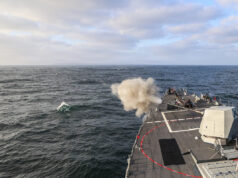
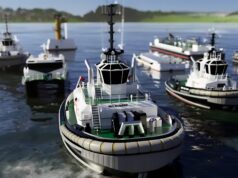
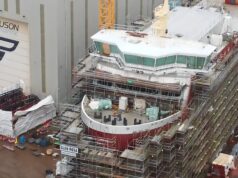
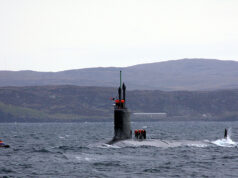
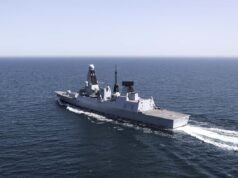

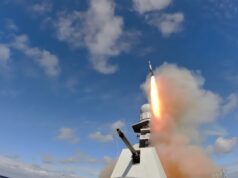
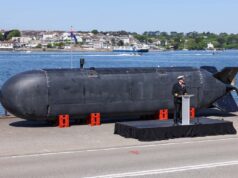
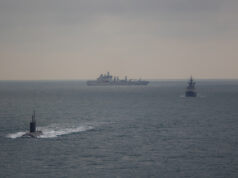
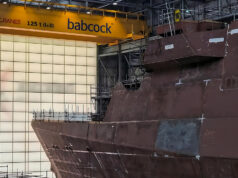

May be a substantial increase in underwater robot systems, which could operate on a 24/7 basis. Furthermore, the use of the private sector to carry out 70% of surveillance would allow the RN to concentrate on its core business.
The RN needs another Ice Patrol vessel – ideally one built to RN requirements like the previous HMS Endurance – it really is that simple.
What about the Canadian Harry DeWolff class AOPV? Helicopter, drone capable and can be hangared. The Babcock stretched T31 MRP variant looked useful and maybe could be ice hardened. What’s happening with the T32 class, still mysterious? And weren’t the MOD/BAE looking at Kongsberg Vanguard class?
The Harry de Wolfe class aren’t really a warship but a very capable class 5 Ice Hardened OPV, but they are horrendously expensive (mainly down to Canadian shipbuilding costs). Norway doesn’t seem to use Kongserg designs for this sort of task but VARD ones, Harry De Wolfe is based on the Norwegian Svalbard class which is a VARD design.
If it was me I’d go down the same route as the Vanguard isn’t an in service ship, just a concept / design. If you really want to go all in take a look at Norways Jan Mayen class, 10k and with lots of space.
Thanks Rodney. I’ll have a look at these.
We should get the Italians to make our bloody ships, yesterday they started work on the new fremm Evo and say it will be in survive by 2029.That says lots about us don’t it……
By the time T83 comes into service, there’ll be no ice left in the Arctic!
UKDJ has clearly upgraded their AI image generator, that looks (nearly) exactly like the BAE T83 proposal!
But why would an air defence destroyer need to travel in sea ice conditions? The only forces that e.g. the Russians maintain up there are submarines, and it isn’t looking likely that T83 will have a sonar fit.
T45 was intended to have a sonar but it was reduced, by salami slicing, to the present unspectacular unit.
Given that T45 is IEP it should be able to be quietened enough to get to AB levels of sonar performance and as I’ve said a few times I suspect that PiP will do at least part of this with rafted diesels in enclosures.
What we should have done with T31 (and retrofitted with PiP, if possible) is a standardised family of towed sonars that can be fitted whenever necessary to other escorts, like the Kraitline or maybe CAPTAS-1.
Then in an Atlantic CSG, for example a T31 could help with ASW beyond being a Merlin lilypad.
Re: T31. Did they raft the diesels? They should have, at a minimum, fitted a hull mounted sonar. IH frigate (the parent design), has a hull mounted sonar & facility for a towed array. T31 was built down to a price, not up to a capability. It’s a pity. Babcock, OMT, Thales et al, did quite a good job on the (IH) A140 modernisation. Indeed, I think Denmark’s current AAW problems with IH class would go away if they followed some of the same path.
Re type 45 sonar, although not a long range unit, its worth noting the australians chose the same hull sonar as the type 45 for their Hobart class destroyers so not as poor as many make out. On the noise issue, l askrd a serving officer on a (not yet p.i.p) type 45 about tbis. The answer l got was… depenfs at what speed. Below about 13 knots the ships are very quiet, but above that cavitation from hull and prlpelldr etc generates qjite a bit of noise.
‘Depends on what speed’ is universally true….an SSN at 25kts will be reasonably blind a T26 at 30kts will be blind.
Most ASW work is done at a crawl sometimes just enough to put some tension on the tail so it can be depth adjusted.
I’m not surprised that a T45 runs reasonably quiet below 13kts and was always a bit surprised about how much the noise levels and dud sonar were talked up. Sure it is no T23.
Actually mate that’s not entirely correct ref the sonar set on the Aus Hobarts. The only thing the two systems have in common are that the were manufactured by Ultra Electronics. The Hobarts use a set up very similar to that of our T23s (2050/2087) and is far superior to the junk they put on the T45s.
T 45s MFS-7000 is a bastardised version of EDO-610E fitted to Brazilian frigates – their version of our T21s which was designed in the 1970s. @SB is correct with his Salami slicing post ref the sonar fit. The T45s should have had 2016/2050 fitted just like the 23s, but, due to programme cost overruns went for a cheap and usless compromise instead.
We did trials with a T45 in the Med in the late 00s their detection ranges while we were at PD or at depth were very poor and nothing has changed since – except that the system is no longer used – manpower savings. The result is that a T45 doesn’t have a rounded capability when warfighting and would need some form of ASW escort to stop it being sunk in the event of hostilities commencing.
T45s were horrendously noisy when they first came out, a lot of money has been spent on rectifying their noise issues. Whilst they have gotten quieter, they are still far noisier at any given speed when compared with a T23 most of which are some 30 yo, so not a great yardstick to quantify that metric.
That’s much closer to the artist’s impression provided to Navy Lookout, which didn’t come from BAE. BAE’s proposal has some key differences around the area forward of the bridge, the rear superstructure and structure of the mast. It also lacks the Artisan radar.
NL just lifted their images from the presentations at CNE, the fixed panel one is BAE but the Artisan one is from the RN presentation on FADS.
The Navy one has the funny extended sides to the VLS silo seen above, the BAE one doesn’t and looks a lot more like T26.
The image here’s missing a lot from the last one. DF, 40mm, extra vls, torpedo defence. I still can’t figure out if that’s a muscled up 57mm or a 127mm Oto Melara or a new Bofor calibre? It keeps us guessing until something more final comes out. It’ll be interesting if the RN goes for an all new AAW T83 and or a T26/T31 based AAW variant and try to get some exports too.
Finnish-Swedish Ice classes. Super IA is the highest level, minimum speed 5 knots in a one metre thick ice channel. IA, IB & IC have lower requirements. IB for 0.8m, IC for 0.6m for non consolidated ice. New RN frigates/destroyers just need hulls to IC standard.
What if anything do they have right now?
By the time they are built, there will be no ice left. (apparently)
2You have stolen my childhood and my dreams with your empty words”.
T83 is an escort vessel, giving it a solo job away from were it needs to be is just stupid.
Type 32 if that ever gets built (Type 31 Batch two) could be hardened for this and can operate alone, but will a sona added, not idea with this hull ofc.
The T45 and the T23 and pretty much every RN vessel ends up doing solo missions at some point – it’s all part of the job.
Where did the picture come from?
It’s just a made up thing, It’s not representative of the proposed T83 (BAE concept design or not) because we know nothing whatsoever about it yet. Like a lot of stuff on these sites and so many others, It’s just an image to give a visual element to the subject.
Same with Tempest/Edgewing.
Same with T32.
Same with Dreadnought.
same withT91.
“This is wat I is sayin like init bro”. (that’s modern English for us old fuddies)
Yes but where did it come from?
Colder Waters.
wouldn’t T26 be more suitable for Arctic missions? seems subs and surface ships are more of a threat there than aerial assets
my 2 cents
Clear role for a type 31 batch 2 or type 32, not the type 83
That’s one why to increase the price for a hull that will already be expensive.
That’s one way to make them last longer without taking them out of commission for 3 years and expensively replacing and welding on new plates and other parts of the structure.
Does the RN need an air defence destroyer that far North? No the T83s will operate with the carriers or a T26 ASW group in the GIUK Gap. As for a carrier group I have the gut feeling that they will not operate in war time much further north than the northern Norway. Also if people remember we sailed many Artic convoys without reinforced hulls. If we need vessels that far North then either we have a Norwegian design or Canadian design with some extra weapon capability or a batch 2 T31 with a reinforced hull.
As for operations in the Baltic, why? Finland, Sweden, Poland and Denmark is more than capable of looking after the Baltic. Not only that but a 10,000 ton air defence destroyer becomes a target in a closed area, she is no longer an asset but a risk.
For the Baltic we should also include Germany and Poland too, surely.
The Polish A140 frigates look very well kitted out, with Merlins too, why not a few of those or upgraded T31s for the RN and an extra T26 if eight is not enough?
yes
Hello mate, the Polish A140s are kitted out well, but then again they are having to perform the duties of both our T26s and 45s.
We should really jump on the Camm-MR bandwagon when it’s ready, put them on both our T31/26s. It increases the numbers of missiles carried and extends the engagement range v aircraft, win win imo.
Personally would like us to order 3 more T31 with hull sonar and 3 more T26s, then 8 T83s when ready. Then deep six the whole T32 idea and order 6 motherships for our MW programme.
It’s not beyond the realms of possibilities but unlikely nevertheless.
And where will you get the money for that?
At the moment we face a big shortfall in military spending going back many years that needs to be put right. We face a big shortfall in infrastructure investment going back even longer. We have maxed out our national borrowing to fund tax cuts.
To be ready to fight we need to recapitalise the military, modernise our national infrastructure and par down the debt all at once. The only possible source of money for all that is welfare reform. Sir Keir made a brave start (It is probably something only Labour can do in an ‘only Nixon could go to China’ Way) but has been stabbed in the back, mainly by Reform.
In many ways I agree with you. However, when I was in school learning about national finance I always remeber the lesson. What a nation must earn and what is a nice to have.
How a nation has the must have is to sell goods, hard goods, what we make and sell that overseas. That covers the nations bills. Then the nice to have it pays for the luxuries which is covered by soft goods such as tourism, finance, insurance. etc.
The issue with the UK is that we have become a soft good nation, but in times of difficulties or war they are the first thing that gets cut back.
We the UK need to rebuild industry to cover the year to year spend, everything on top is a luxury.